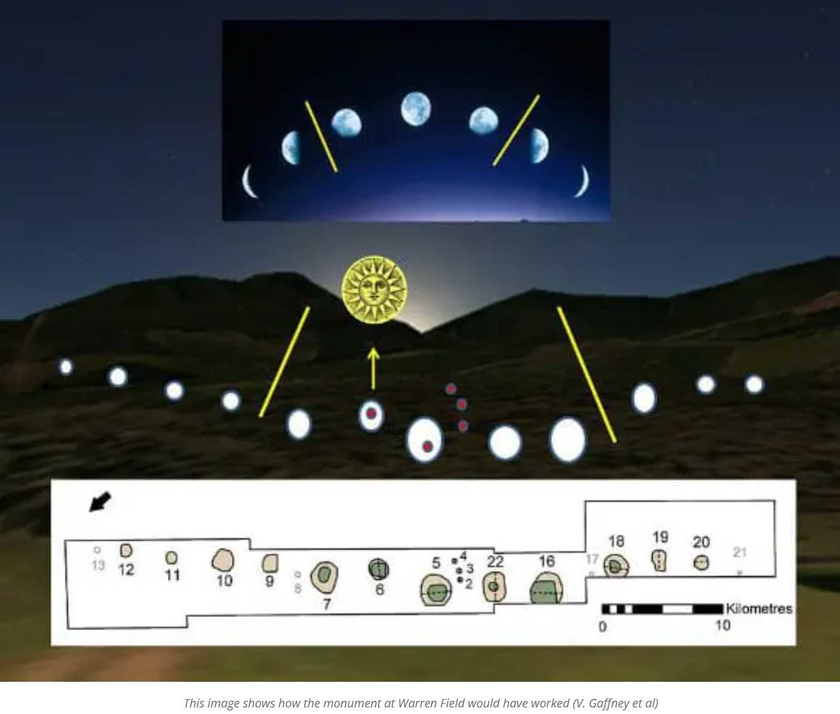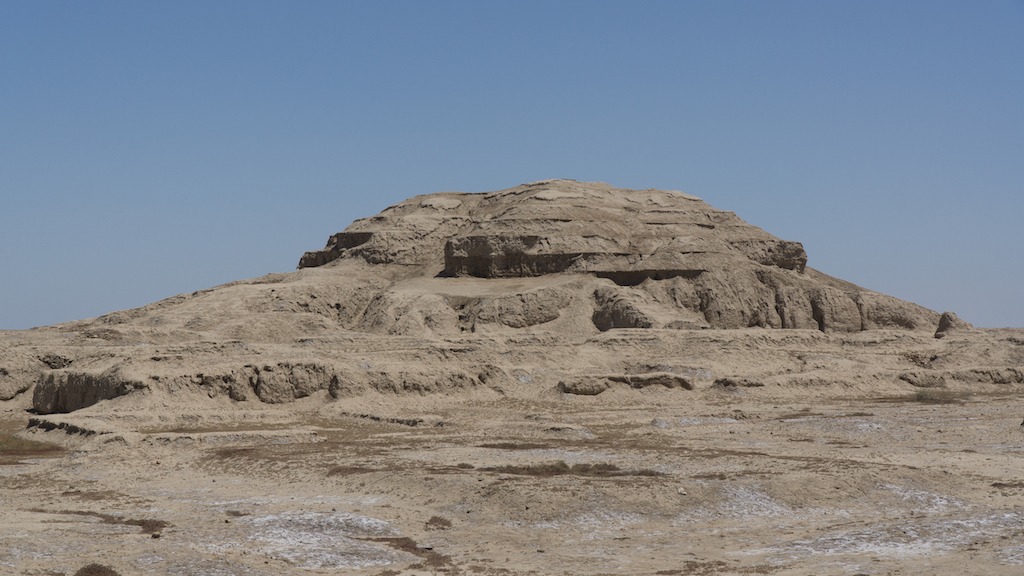How did our current calendar come into being? Why do we have a calendar at all? Well at calendar.com they provided some insight brought to you below:
"Wherever you live, whatever language you speak, and however you fill your day — that day will be the same as everyone else’s, in one significant way. The sun will rise in the morning and set in the evening. The sun tends to be quite predictable and follows a regular anticipated cycle. We can set our watches by the sun — but a millennia ago, the sun bore a child — the calendar. Here are some interesting facts about the history of the Calendar.
The Nature of the Sun Brought with it Enough Calendar History to Produce a Calendar.
Very few things in this world can be depended on — but the sun is loyal, steady, and true. Its cycle is trustworthy year after year — making its emulation by all people through ages understandable.
At the same time each month, the shape of the moon will change. It will start as a crescent that fills the night sky, then shrinks; a process that takes about thirty sunsets and sunrises. The stars, too, will move across the sky, returning to their original positions after about 365 of those sunrises and sunsets.
Humans have noticed the night patterns for as long as they’ve had backs straight enough to stand and look to the sky. And they’ve tried to predict and measure those movements too, and for good reason. By counting days and the passage of the moon, they could predict changes in the weather.
These ancient people could tell when winter was approaching by when the days would grow longer or shorter. They would know when to plant crops; when to look for particular animals; when their own animals were likely to give birth, and when to give thanks to the gods.
Today, our history tells us to count those days to plan meetings, book vacations, plan events and a host of other things on our Calendars.
Our history depends entirely on the use of a calendar to organize our days, now, in our time. In this guide, we’re going to look at how the calendar has developed and how we use it today.
Calendars in Ancient Times
In 2013, British archeologists announced the discovery of what they claim as the world’s oldest calendar. The site at Warren Field in Scotland consists of twelve pits aligned with the southeast horizon. They pointed towards a hill associated with the sunrise on the midwinter solstice. Archeologists believe that hunter-gatherers used the pits to check the height and stage of the moon in order to track time in relation to the sun and the changing seasons.
The calendar in Scotland is about 10,000 years old, which makes the Warren Field in Scotland about twice as old as Stonehenge (discovered in 1978). People are more familiar with Stonehenge sight, an ancient stone circle in the south of England, which also aligns with the solstices.
The challenge with interpreting these sights, though, is that Neolithic people created and built the sights at a time when there were no written records. Archeologists have looked at the shape and alignment of the stones and the contents of nearby burial sights to figure out what other practices were conducted here, and what other secrets the sights may hold.
Stonehenge is more likely to have been a location for performing rituals at specific moments of the year than a way to keep track of time — although the structure is capable of being a calendar, also revealing times of the equinoxes and solstices — (which are not precisely the same thing). Recent findings show the Stonehenge sight was believed to hold curative, healing powers. Hunters might have used the Warren Field (Scotland) not only to give them “times of the year to plant or harvest,” but possibly to tell hunters when they could expect to start looking for particular kinds of migrating animals.
Evidence for some abilities needed to wait for the start of civilization and the first written calendars.
While early man might have used both sights used to mark time, some people say it’s unlikely that they used them to keep track of time permanently. The sights show that Neolithic peoples had a concrete concept of time passing and knew that cycles were predictable over time. Some sights indicate an ability to measure the passing of weeks or months.
The History of the Babylonian Calendar
The first cities were formed between the Tigris and Euphrates rivers that originated in the Taurus mountains of southeastern Turkey. The headwaters diverge and run south through Syria and Iraq, and several tributaries are added from Iran before flowing into the Persian Gulf.
Ur, which was founded around 3,800 BC, would once have been a coastal city. Changes to the landscape now place it more than 200 kilometers from the sea; but at one point the Ur III empire would have stretched up through much of modern Iraq, incorporating a number of smaller cities.
Clay tablets marked by cuneiform writing indicate that before Ur incorporated them, those cities would have had their own calendars with their own names for the months of the year. Nippur, for example, had months called “du6-ku33,” or “Shiny Mound,” and “kin-dinanna,” or “Work of Inanna.”
The city of Umma had months that translate as “Harvest,” “Barley is at the quay” and “Firstfruit (offerings).” Each of the cities had a month called, “Extra,” that allowed them to reset the calendar in the same way as a leap year.
The conquests of King Shulgi, who ruled in the 21st century BC, united those calendars into the Umma calendar — and that calendar formed the basis of the Babylonian calendar. The Umma calendar, too, had twelve months and a thirteenth month every four years.
The calendar starts in the spring, around March or April in the Gregorian calendar, with Araḫ Nisānu, the “Month of the Sanctuary.” That’s followed by the “Month of the Bull,” which corresponds with the zodiac sign Taurus. The seventh month is the “Month of the Beginning,” and it begins the second half of the year — and is followed by the “Month of Laying Foundations.”
Babylonian weeks would not have been unfamiliar. Each seventh day was a rest day on which officials were prohibited from engaging in certain activities. For the Babylonian calendar — these same activities couldn’t be done on the 28th day of each month, either. On each rest day, Babylonians made offerings to a different god. Perhaps the strangest aspect of a Babylonian month would have been the length of the last week. Each week lasted seven days, but during the lunar cycle, the month, lasting 29 or 30 days, made it so the last week of each month lasted eight or nine days.
The History of the Egyptian Calendar
The Babylonian Empire lasted from around 1896 BC to 539 BC, reaching its peak during the reign of King Hammurabi (1792 BC to 1750 BC). At the same time that Babylonians were looking forward to the lengthy last weekend of the month, the Egyptian empire was growing in the west.
Scholars dispute the existence of early Egyptian calendars based on the rise of Sirius or the presence of a year lasting 360 days. But it’s clear that as early as 3,000 BC, Egyptians were interested in the yearly cycle. What interested them most was the annual flooding of the Nile. Each year between May and August according to the Gregorian calendar, the monsoon brings heavy rains to the Ethiopian highlands south of Egypt. The waters flow into the Nile, causing the river to flood its banks.
That flooding determined the size of the harvest. A system of dams and dikes drove the floodwater into fields to saturate the soil. The water that collected in the fields had to be sufficient to grow the crops through the dry season. A low flood meant a poor harvest.
But the floods also determined the pattern of the year. Egyptians divided their calendar into three seasons. The Flood Season lasted from around June to September and was when the Nile flooded and the waters inundated the fields. “Emergence” lasted from around October to January. Finally, the Low Water or harvest season took place between February and May. During the early dynasties of Egyptian history, the months within those seasons had numbers —“First Month of the Flood,” “Second Month of The Flood,” and so on. By the Middle Kingdom, however, the months had picked up names which have largely survived through the New Kingdom and Greek calendars to the current Coptic calendar.
The Calendar According to the Nile
The three periods determined by the rise and fall of the Nile formed the year, and they occurred regularly. They were as crucial as migrating birds were to the hunter-gatherers of the Scottish Isles — yet, no more predictable. While the rise and fall of the sun and the moon or the turning of the stars follow a definite pattern, the coming of the monsoon, like the flight of storks, depends on weather systems that vary from year to year.
While the seasonal calendar allowed Egyptian farmers to predict when they should open their dams and plant their seeds. The seasonal calendar was decidedly less helpful at predicting and marking other events that took place throughout the year.
By the time of the Old Kingdom, the period when the pyramids were built, Egypt had also instituted a civil calendar. The civil calendar is likely to have been based on the movement of Sirius, a star which re-appeared in the sky at about the same time as the Nile would start to flood.
The civil year was made up of twelve months of 30 days, and an additional month of five days, creating a year of 365 days. The lack of a leap year meant that the movement of the stars gradually fell out of sync with the names of the month. As the appearance of Sirius fell back through the calendar, the Egyptians created a Sothic Cycle. Every 1,461 Egyptian civil years, Sirius would return to its place in the calendar.
The Roman Calendar
By the time of the establishment of the Roman Empire, we had several millennia of experimentation completed with various calendrical systems and with multiple different ways of marking time. We had stone circles and stone markings. We had the lunar calendars and combinations of solar and lunar calendars.
We still weren’t getting it right. That the amount of time the Earth took to revolve around the sun couldn’t be counted in whole days. When a civilization couldn’t count an entire day, it meant that calendars in different places and times around the world would regularly fall out of sync with the seasons. If a calendar is out of sync with the seasons — it’s out of sync with the stars and the movement of the moon.
The earliest Roman calendars were little better than most (and look at that tile work!). These calendars, too, started as lunar calendars, tracking the development of the moon over 29.5 days. With the early Roman calendars, they only lost ten or eleven days a year. At the same time, early Rome also had a nundinal cycle derived from the Etruscans. The nundinal cycle was an eight-day week, ending with a market or a festival. Farmers would head to the city to buy and sell goods. Children had no classes on that day, and slave-owners warned their property not to enjoy themselves too much.
A year in early Rome is believed to have been made up of 38 such nundinal cycles, divided into ten months of 30 or 31 days. How the Romans dealt with the remaining days is unclear. Some scholars have claimed that the Romans disregarded them while others suggest that the early Romans practiced intercalation, inserting extra days into the calendar to fill the gap and make sure that the calendar didn’t fall out of sync with the seasons.
Beware the Ides; and the Kalends; and the Nones
The end of the Roman kingdom and the growth of the Roman Republic led to another revision of the calendrical system. Now the Romans were influenced by Greek calendars which divided the year into twelve lunar months, alternating between 29 and 30 days. The Romans, however, gave the third, fifth, seventh, and tenth months of 31 days each. Every other month was 29 days, except February which had 28 days and 29 in each leap year.
Each month, too, was carefully divided. The Romans called the first of the month “kalends,” the origin of the English word “calendar.” They called the day before the middle of the month the “ides,” and the eight days before the ides (or nine days counting inclusively) they called “nones.” Those moments are likely to reflect the calendar’s lunar origins, and mark the sighting of the crescent moon, the quarter moon, and the full moon.
We can begin to see and understand a bit of information about the foundation of the calendar that we use today. In particular, we note the use of an intercalary month in February to keep the months aligned with the seasons. But the Roman calendar did have one interesting difference.
After the establishment of the Roman Republic, control over the intercalation passed to the high priests. By adjusting the number of days in February, they were able to lengthen or shorten the term of office of the consuls they supported. It was as though a political party could determine the length of a year and make the year longer when they were in office. The priests could gerrymander the calendar.
The History of the Julian Calendar
In 48 BC, Julius Caesar proposed a reform to the Roman calendar. The high priests’ willingness to adjust the length of the year in accordance with the rule of their political allies or to skip intercalation if it suited them, meant that the calendar drifted out of alignment with the year. The Second Punic War against Carthage and the Civil Wars, in particular, meant that few people outside Rome knew the current date. Between 63 BC and 46 BC, the calendar had only five intercalary months instead of eight, and none between 51 BC and 46 BC. Historians have called these years the “years of confusion.” Julius Caesar had spent time in Egypt, knew what day it was, and wanted a more conventional way of maintaining the calendar.
After returning from the African campaign in 46 BC, Caesar added two intercalary months between November and December, increasing that year by 67 days. The year had already been increased from 355 to 378 days, so in 46 BC the calendar was now 445 days long.
The reform then added ten days to every year. Two days were added to January, Sextilis (which is now August) and December. Another day was added to April, June, September, and November. February continued to be 28 days. The new calendar removed the previous intercalary month, replacing it with a new leap day placed before the kalends of March. Romans continued to mark kalends, ides, and nones, but the pattern of the calendar that would come to be used by much of the modern world had been formed."
There is more, but that will have to be tomorrow.
Reference: https://www.calendar.com/history-of-the-calendar/
I have lost a lot of faith with the Medical Community and the Governments over the last several years, but there are a few good things that can raise above the corruption and the pushing of drugs a new approach to heal people. The following is from www.gaia.com and written by Hunter Parsons that does not involve any drug or pushing an ineffective so called vaccine that the drug company is not held accountable in any way but they use sound! The use of sound can regrow bone tissue! Here is the story:
"The future of regenerative medicine could be found within sound healing by regrowing bone cells with sound waves.
The use of sound as a healing modality has an ancient tradition all over the world. The ancient Greeks used sound to cure mental disorders; Australian Aborigines reportedly use the didgeridoo to heal; and Tibetan or Himalayan singing bowls were, and still are, used for spiritual healing ceremonies.
Recently, a study showed an hour-long sound bowl meditation reduced anger, fatigue, anxiety, and ...
Not a fan of a Defense Agency studying Anti-Gravity and other Exotic Tech, but if the commercial world and make this technology cheap that will change our world yet again. The following is about three minute read and from www.gaia.com. The below was written by Hunter Parsons:
"Wormholes, invisibility cloaks, and anti-gravity — it’s not science fiction, it’s just some of the exotic things the U.S. government has been researching.
A massive document dump by the Defense Intelligence Agency shows some of the wild research projects the United States government was, at least, funding through the Advanced Aerospace Threat Identification Program known as AATIP.
And another lesser-known entity called the Advanced Aerospace Weapons System Application Program or AAWSAP
The Defense Intelligence Agency has recently released a large number of documents to different news outlets and individuals who have filed Freedom of Information Act requests.
Of particular interest are some 1,600 pages released to Vice News, which ...
As our technology gets better we are discovering more about the history of mankind and pushing the timeline back further and further. The following article is from www.gaia.com and written by Michael Chary that discusses this new find that changes the historical timeline:
"Over the past decade, there have been a number of archeological revelations pushing back the timeline of human evolution and our ancient ancestors’ various diasporas. Initially, these discoveries elicit some resistance as archeologists bemoan the daunting prospect of rewriting the history books, though once enough evidence is presented to established institutions, a new chronology becomes accepted.
But this really only pertains to the era of human development that predates civilization — the epochs of our past in which we were merely hunter-gatherers and nomads roaming the savannahs. Try challenging the consensus timeline of human civilization and it’s likely you’ll be met with derision and rigidity.
Conversely, someone of an alternative...
Not sure if you have heard of a show on YouTube called "The Why Files". If not you should check it out it is interesting and has some humor with it on different subjects. Last weeks was on a different theory how the Universe works and how main stream Science is attempting to shut it down like is always seems to do if it goes aguest some special interest. Today it is akin to what happened to those who questioned the Earth was the Center of the Universe that main stream so called Science all believed during the Renaissance period, They called any theory that the Earth was not the Center of the Universe misinformation. Does this sound familiar today? People laughed and mocked people like Leonardo da Vinci, Nicolaus Copernicus, Georg Purbach as crack-pots, conspiracy theorists, nut-jobs and they were suppressed and even imprisoned for their radical thoughts and observations. Again it sounds like today in so many ways. In any event this is a good one to ponder and see even if a bad idea ...
Seemingly chaotic systems like the weather and the financial markets are governed by the laws of chaos theory.
We all have heard about chaos theory, but if you have not or have forgotten what chaos theory is well here you go from interestingengineering.com:
"Chaos theory deals with dynamic systems, which are highly sensitive to initial conditions, making it almost impossible to track the resulting unpredictable behavior. Chaos theory seeks to find patterns in systems that appear random, such as weather, fluid turbulence, and the stock market.
Since the smallest of changes can lead to vastly different outcomes, the long-term behavior of chaotic systems is difficult to predict despite their inherently deterministic nature.
As Edward Lorenz, who first proposed what became commonly known as the Butterfly Effect, eloquently said, "Chaos: When the present determines the future, but the approximate present does not approximately determine the future.""
You may have heard the term about chaos theory as a butterfly flaps its wings in Brazil,...
I for one have lost trust in Medical Doctors due to COVID and reflection that they seem to push pills for everything and untested so called vaccines that is using a unproven technology because the Government and the Medical Boards of the State told them to. There are a very few exceptions. Thus they do not address the key problem just prescribe more and more pills to keep you alive an sick longer for them and Big Phama to profit from you. Will AI do any better? Well that depends on what was used for the training of AI. If it also pushes pills and vaccines without question then you have the same problems noted above. However, if the AI Training includes all possible forms of treatment and they zero in on the right issues for the true problem then there is possibilities they would be way better than most of the current Medical Doctors today.
The following is from an article from interestingengineering.com and written by Paul Ratner:
"A new study looks at how accurately AI can diagnose patients. We interview the researcher, who weighs in on AI's role ...



























